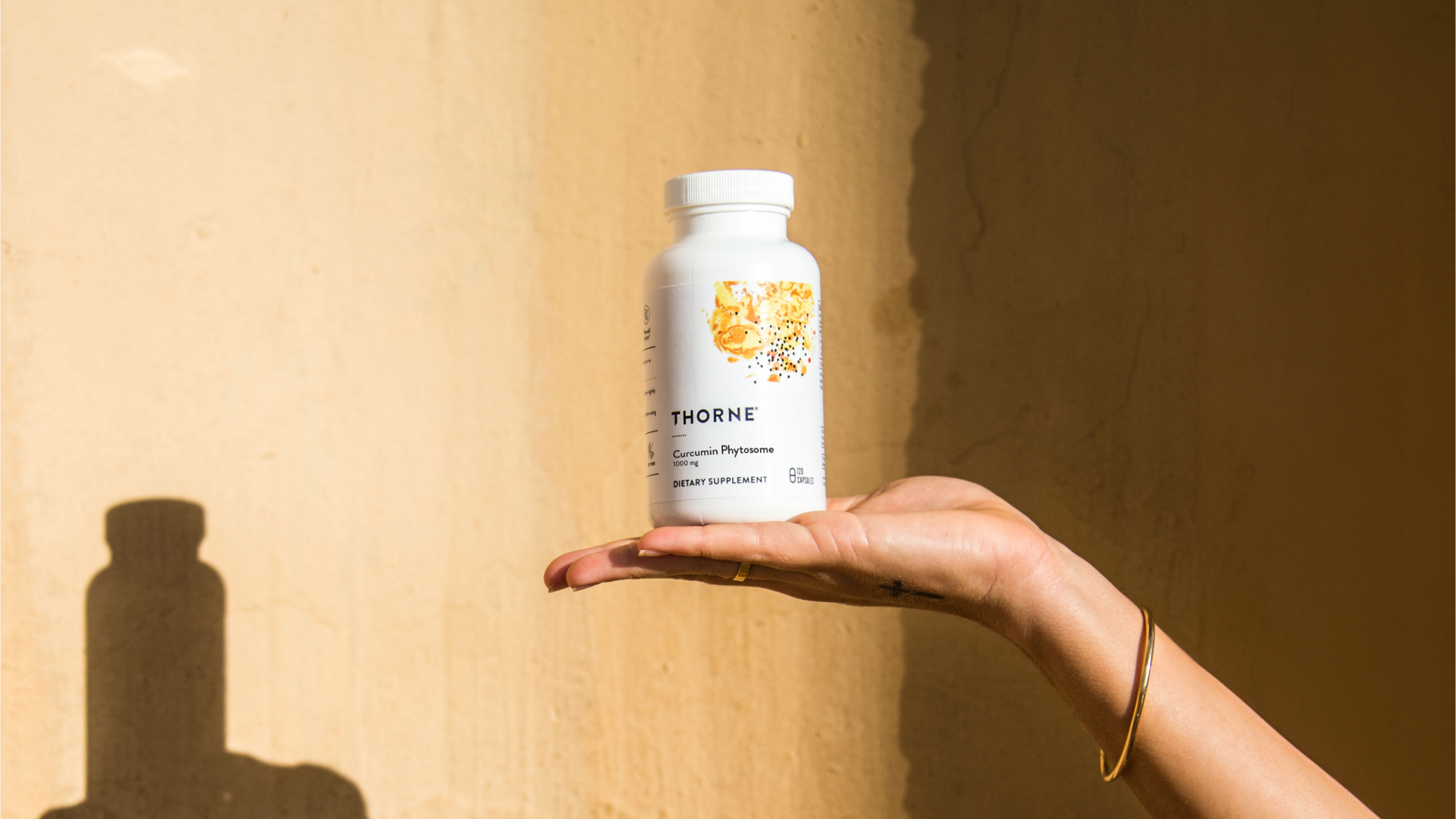We feel a bit like a broken record over here, but vitamin D deficiency is an under-publicized epidemic. Lack of education about the importance of vitamin D, coupled with a culture that forces most people indoors during daylight hours has left about 50% of the global population vitamin D insufficient and 37% of adults in the US vitamin D deficient [1]. Infants and the elderly are suffering at higher rates than middle-aged adults [1]. Rates of deficiency are closer to 80% among Black and Latinx populations in the US [2].
These numbers are concerning for a number of reasons, and today we are tackling just one: heart health. Read on to find out why your vitamin D status is so important for the longevity of your heart.

What is Vitamin D?
Vitamin D is also known as “the sunshine vitamin” because humans make it internally when our skin is exposed to sunlight (D3, specifically; cholecalciferol).
Because we can make it endogenously, vitamin D is not considered an essential vitamin. And, very few foods contain vitamin D naturally. Fatty fish and egg yolks are natural food sources of vitamin D [3]. Because of its importance to bones, many dairy (and some non-dairy) milks are fortified with vitamin D [3].
Vitamin D is a fat-soluble vitamin but acts like a hormone when activated (to calcitriol) by the liver and kidneys in the body. Nearly every single cell type in the body expresses vitamin D receptors, demonstrating its widespread importance in human health.
Of its many roles in the body, vitamin D is necessary for the absorption of dietary minerals from the gut, including calcium, magnesium, and phosphate. It also regulates the concentrations of these minerals throughout the body. For a long time, vitamin D was only credited as a bone-support vitamin, due to its relationship with calcium and phosphorus, and its ability to cure rickets. We now know that vitamin D is necessary for many more biological processes, from mood, to neurological health, to balanced inflammation [4-6].
Why is Vitamin D Deficiency So Common?
Lack of Sun Exposure
The trouble with “the sunshine vitamin” is that most of us don’t spend enough time in the sun to fulfill our minimum vitamin D needs. Regular work and school hours keep most Westerners indoors during peak sunlight hours. When we do spend time outside, we are usually covered up, either by clothing for warmth or sunscreen to protect us from skin damage.
Race plays a factor too. Darker skin contains more of the pigment melanin, which naturally protects skin from damage caused by the sun. Unfortunately, melanin also blocks the rays needed for vitamin D production. This means, the darker your skin is, the longer you need in the sun each day to fulfill your vitamin D requirement. The general rule-of-thumb to produce adequate vitamin D is 15-20 minutes of direct sun exposure per day, with at least 40% of skin exposed (no sunscreen) [3]. As we age, we need to extend this time, as skin produces less of the necessary chemicals for cholecalciferol production [7].
Other Causes of Deficiency
Even if you are confident you are spending plenty of time in the sun, there are still more roadblocks to vitamin D sufficiency for many people.
Because vitamin D is a fat-soluble vitamin, those with obesity or who carry excess adipose tissue are more likely to sequester vitamin D in fat after its production in the skin, preventing its activation and circulation for use in the body [7]. Because cholecalciferol made by the skin must be converted by the liver and kidneys to its activated hormone form, disease or dysfunction in the liver or kidneys can interrupt this process causing low vitamin D deficiency [7].
Even with proper cholecalciferol conversion, hyperthyroidism or primary hyperparathyroidism interfere with the balance of circulating activated vitamin D, causing a reduction in vitamin D status [7].
For those who rely on supplemental vitamin D ingestion, gastrointestinal difficulties that affect fat absorption, such as Crohn’s disease, bypass surgeries, or cholesterol medications, can all interfere with the absorption of vitamin D from the diet or supplements [7].
Vitamin D and Cardiovascular Disease
On the most basic level, statistics show that low vitamin D levels in the circulation are associated with a higher incidence of cardiovascular disease and mortality [8]. But, if you’ve taken STATS 101, you know “correlations don’t prove causation”.
This is why multiple experimental models must be employed to further investigate the relationship.
For example, when knockout mice are bred without vitamin D receptors, they suffer from cardiovascular disease [8]. This is a clinical way of showing that vitamin D is absolutely necessary for healthy function of the heart and circulatory system… in mice. We can extrapolate mouse data to have a similar meaning in humans, but it is not definitive.
While the associations are clear, research is still uncovering the mechanisms behind this relationship in humans. Here, we will summarize what clinical data shows about vitamin D and CVD.
Vitamin D and CVD Risk Factors
Hyperparathyroidism, hypertension, and diabetes are all risk factors for CVD.
First, parathyroid hormone (PTH) concentrations are known to be inversely related to vitamin D concentrations. Vitamin D keeps parathyroid levels and actions in balance. PTH increases blood pressure, can contribute to myocardial hypertrophy, and has pro-arrhythmic actions [9]. When PTH levels get too high (as tends to happen when one is vitamin D deficient), the risk of CVD increases [8].
Low vitamin D is also independently associated with hypertension (high blood pressure), which is another risk factor for CVD [8]. This relationship is thought to occur due to the anti-inflammatory properties of vitamin D, a protective effect that vitamin D exerts on blood vessels, and its anti-diabetic properties [8].
High potency supplementation with vitamin D has been demonstrated to help obese, hypertensive patients achieve a healthier blood pressure and improved plasma flow to the kidneys [10]. However, there is also some evidence that too-high vitamin D can cause some arterial concerns, due to its relationship with calcium concentrations [11].
Low vitamin D status and type II diabetes are associated as well, and diabetes is a known risk factor in CVD development. A review study showed that individuals with healthy vitamin D status had a 43% lower risk of developing type II diabetes compared to those with the lowest levels of vitamin D status [12].
Vitamin D supplementation does not treat or cure diabetes and has been shown to have no effect on the glycemic balance of those with established diabetes [12]. It has, however, been shown to help improve insulin resistance in patients with borderline glucose intolerance [12].
Direct Effects of Vitamin D on the Heart and Blood Vessels
The heart and blood vessels are a known, direct target of vitamin D, as they express vitamin D receptors. Vitamin D may contribute to the normal structure and function of the heart. Namely, because it seems to have preventative action against hypertrophy (overgrowth of muscle cells) [8]. Activation of the vitamin D receptors in the heart also modulates cardiac calcium flux and relaxation of heart cells, which supports healthy diastolic function of the heart [8].
Atherosclerosis, or the hardening of arteries due to plaque build-up, is a form of CVD that can lead to heart attacks, strokes, and aneurysms. Vitamin D may exhibit some anti-atherosclerotic activities [8]. Vitamin D has been shown to inhibit some cholesterol uptake by immune cells, slow the migration and proliferation of smooth muscle cells, and support healthy inflammatory response in the structural cells surrounding arteries [8].
Major Takeaways
Far too many people, worldwide, are likely suffering from the effects of vitamin D deficiency. The statistics are clear, that the modern human population is largely deficient due to the multitude of factors keeping our skin covered.
The second issue is that many of the symptoms of vitamin D insufficiency/deficiency are symptoms that could be caused by a number of factors (depressed or anxious mood, fatigue, bone pain, falls, and fractures) and so are difficult to diagnose.
Even the potential effects of long-term deficiency can be hard to trace back to vitamin D.
Because of the many, serious associations with vitamin D deficiency, the best thing you can do is have your blood tested for vitamin D. Your results should be an interesting starting place for a conversation with your doctor about getting an appropriate amount of vitamin D for your body, and which, if any, health challenges might be standing in between you and vitamin D sufficiency.
- Sizar, Omeed, et al. “Vitamin D deficiency.” StatPearls [Internet] (2021).
- Runestad, Todd. “Congress lauds vitamin D for COVID-19”. Natural Products Insider. Feb 25, 2021. https://www.naturalproductsinsider.com/ingredients/congress-lauds-vitamin-d-covid-19?utm_source=Bibblio&utm_campaign=Related
- Naeem, Zahid. “Vitamin d deficiency-an ignored epidemic.” International journal of health sciences 4.1 (2010): V.
- Huiberts, Laura M., and Karin CHJ Smolders. “Effects of vitamin D on mood and sleep in the healthy population: Interpretations from the serotonergic pathway.” Sleep Medicine Reviews 55 (2021): 101379.
- Farghali, Mahitab, et al. “Can Brain Health Be Supported by Vitamin D-Based Supplements? A Critical Review.” Brain Sciences 10.9 (2020): 660.
- Laird, E., J. Rhodes, and Rose Anne Kenny. “Vitamin D and inflammation: potential implications for severity of Covid-19.” Ir Med J 113.5 (2020): 81.
- Holick, Michael F. “Vitamin D deficiency.” New England journal of medicine 357.3 (2007): 266-281.
- Pilz, Stefan, et al. “Vitamin D, cardiovascular disease and mortality.” Clinical endocrinology 75.5 (2011): 575-584.
- Fitzpatrick, Lorraine A., John P. Bilezikian, and Shonni J. Silverberg. “Parathyroid hormone and the cardiovascular system.” Current osteoporosis reports 6.2 (2008): 77-83.
- Al Mheid, Ibhar, and Arshed A. Quyyumi. “Vitamin D and cardiovascular disease: controversy unresolved.” Journal of the American College of Cardiology 70.1 (2017): 89-100.
- Abraham, Paul S., et al. “THE VITAMIN “D‐BATE”: WHAT VASCULAR RISK IN GERIATRIC INPATIENTS?.” Journal of the American Geriatrics Society 59.8 (2011): 1556-1558.
- Mitri, J., M. D. Muraru, and A. G. Pittas. “Vitamin D and type 2 diabetes: a systematic review.” European journal of clinical nutrition 65.9 (2011): 1005-1015.
Share:
Related Posts

Thorne Celebrates 40 Years of Good Health
Maggie Chandler April 12, 2024 As it’s often said at Thorne, healthy ageing is a gift. It’s about embracing the way you feel, your experiences,

Healthy Coffee Alternatives: When to Quit Coffee & What to Drink Instead
Dr Thomas Wnorowski February 16, 2024 Key Points: Does the idea of quitting coffee make you feel all sorts of (terrible) things? It’s common. But

How Your Social Network Impacts Your Mental Health
Austin Ruff April 17, 2024 Humans are inherently social creatures. It’s in our nature to connect and want to be connected to the people around

Microbiota-Gut-Brain Axis: Behaviour and Dementia Implications
People take supplements to improve or optimize their health. So what happens when you look at the label, and the ingredient list is filled with

Gut Bacteria and GABA
People take supplements to improve or optimize their health. So what happens when you look at the label, and the ingredient list is filled with


